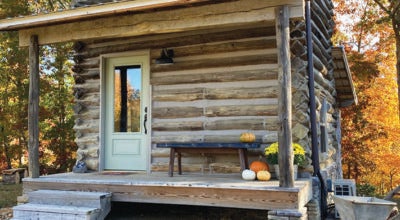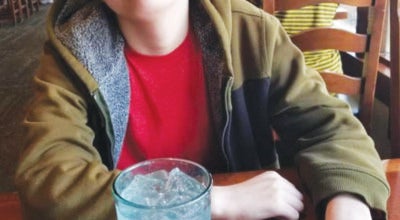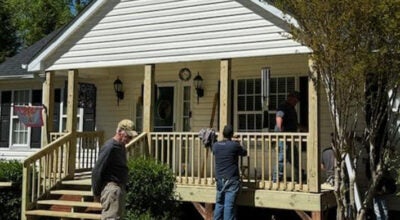The Literary Corner: Renegade Writer’s Guild
Published 10:50 am Thursday, April 21, 2022
|
Getting your Trinity Audio player ready...
|
North Carolina Gold Mines
By Linda H. Barnette
When I was working on John’s mother’s family tree, I found out that his great-grandfather was Emanuel Reed Misenheimer. Naturally, when I learned that they lived in Gold Hill, a township in Cabarrus County, I thought of the Reed Gold Mine and decided to do some research on NC gold mines. Most of my information came from NC Pedia.
It turns out that the first authentic discovery of gold in our state happened in 1799 on the farm of one John Reed near what became Cabarrus County. The Reed gold mine, established in 1803, was said to have yielded 1 million dollars’ worth of gold between 1804 and 1846. It later became a state historic site.
The most interesting part of the story is about 12-year-old Conrad Reed’s discovery of a 17-pound gold nugget in Little Meadow Creek one day when he was fishing. As the story goes, his father used it as a door stop for 3 years until a jeweler from Fayetteville realized that it was gold and bought it from Reed for $3.50—one tenth of one percent of its real value.
After that John Reed formed a partnership some other men. Before the end of the year 1803, a slave named Peter found a 28-pound nugget. It is thought that Reed and his partners made over $100,000 by 1824.
Once the news got out about the gold, many people came to our state to search for gold in rivers, streams, and creeks. However, in 1825 a man named Matthias Barringer discovered that this precious metal could also be discovered in quartz, and that by following the veins of quartz into the ground, one could find gold underground. This discovery brought many more people here looking to make a fast buck.
Gold was also found in Montgomery, Stanly, Rowan, Mecklenburg, and Union counties, among others in the Piedmont. Eventually it became difficult to send gold dust to Philadelphia to be forged into coins, a group of North Carolinians petitioned Congress to establish a mine here, and in 1835 mints were established in 4 Southern cities, including Charlotte. The mint in Charlotte issued gold coins containing a C right above the date on the bottom.
Following the Civil War, a group of private citizens in Charlotte bought the mint building from the US Treasury in 1933 and dedicated it as the Mint Museum of Art, the first art museum in our state. When I lived in Charlotte, the Mint Museum was a favorite place to visit.
On a personal note, when I was a child we used to go out in the country to what was called the “Old Mountain Place,” where we would play and swim in Hunting Creek. My grandfather and my great-grandfather together owned that property, and we visited there often. We were always told not to go near the old gold mine that was on a hill above the creek on what is now Godbey Road, so I never actually got to see the entrance but always knew it was there. To a genealogist, one thing always leads to another thing.
Giving
By E. Bishop
Several years ago, while on lunch break at the local library, an elderly gentleman approached me for help with a letter he had received. I’m not sure why he thought I could help unless it was because I was dressed in my postal uniform as usual for work and that maybe I could be trusted. I choose to think that’s the reason. You see, he could not read or write and he had received a letter from an insurance company regarding his late wife’s affairs that needed urgent attention. He was very grateful. This was just a small gesture on my part to help someone in need. With our busy lives, it can be hard to find the time to think of others or volunteer for worthwhile causes but giving of ourselves can help keep things in perspective.
Not long after having this encounter at the library, a local retired teacher began a tutoring program to work with individuals who wanted to learn English as a second language. And, no, I didn’t have to know Chinese or Spanish or have an English degree to help these individuals. Some family members asked me “Why?” and I said “Why not?” Just like the elderly gentlemen, these individuals sought help and I (along with several others) was willing to volunteer my time to teach ESL. I gained insight into how hard it can be for others to learn our language and I made some new friends along the way.
Volunteering helps bring people together from all walks of life. I can attest to this fact from my past experiences of working at a crisis hotline, women’s shelter, cancer fundraiser, USPS food drive, blood donor, and church activities among other things. May I ask, “what are you doing for others?” No one has ever become poor by giving, except maybe my beloved sister Gail, who bakes cakes and gives them away with abandon. It does not have to be monetary; just a willingness to help without expectations of something in return. Do you have skills to share, time to take an elderly person to a doctor’s appointment, time to visit someone in a nursing home, or do after school tutoring? You can choose from any number of things. You will be contributing to the greater good of society.
Some of the benefits you may receive include having a sense of purpose and community, improved self-esteem, new job prospects, new friendships and more joy and fulfillment in your life. You may develop a stronger support system for the challenging times you may go through in your own life. Also, keep in mind, our children watch everything we do. By volunteering, you will encourage young people to think of others and become a more compassionate adult. You can show them how helping others makes a difference. My grandson has to do thirty hours of volunteer work before he graduates high school. Maybe this should be required of all high school graduates.
Places that volunteers are most needed include food pantries, Habitat for Humanity, local libraries, YMCA, retirement homes, Red Cross, churches, National Parks (clean up efforts), homeless shelters and school tutoring. If you can find the time, it’s good to give. National Volunteer week is April 17-23. It can be contagious.
Spring Sky: Boӧtes the Farmer
By David R. Moore
The constellation Boӧtes (pronounced boo-oat-tays) is supposed to be a hunting farmer. However, it looks like a giant kite rising on its side in the East on an April evening. It is easy to spot. Look for the Big Dipper high in the northeast sky. Extend the arc of the dipper’s handle, and you will find Arcturus, the second brightest star in the night sky. Arcturus marks the tail of the sideways kite that is leaning to the left. Arcturus is a red giant star, thirty-four times the size of our sun and 37 light-years away.
According to Greek mythology, Boӧtes is the son of Demeter, the goddess of agriculture, and a mortal father. Demeter placed Boӧtes with a wealthy farm family who had an older son. All went well for many years as Boӧtes grew up alongside his foster brother, hunting and farming. Unfortunately, Boӧtes’ foster parents died in an accident, and his foster brother ran off with the inheritance. Boӧtes was broke and on his own. He did all the tilling that Spring, as, at that time, all farmers worked the land by hand. Ingenuity and desperation led him to invent the plow that oxen could pull. Word spread fast, and soon he had a booming business building plows for other farmers. With the invention of the plow, more crops were raised, thus feeding more people. The gods of Mount Olympus learned of his remarkable invention and were pleased. Demeter was incredibly proud, and when his time was near, she placed his body in the stars as the constellation we see today.





